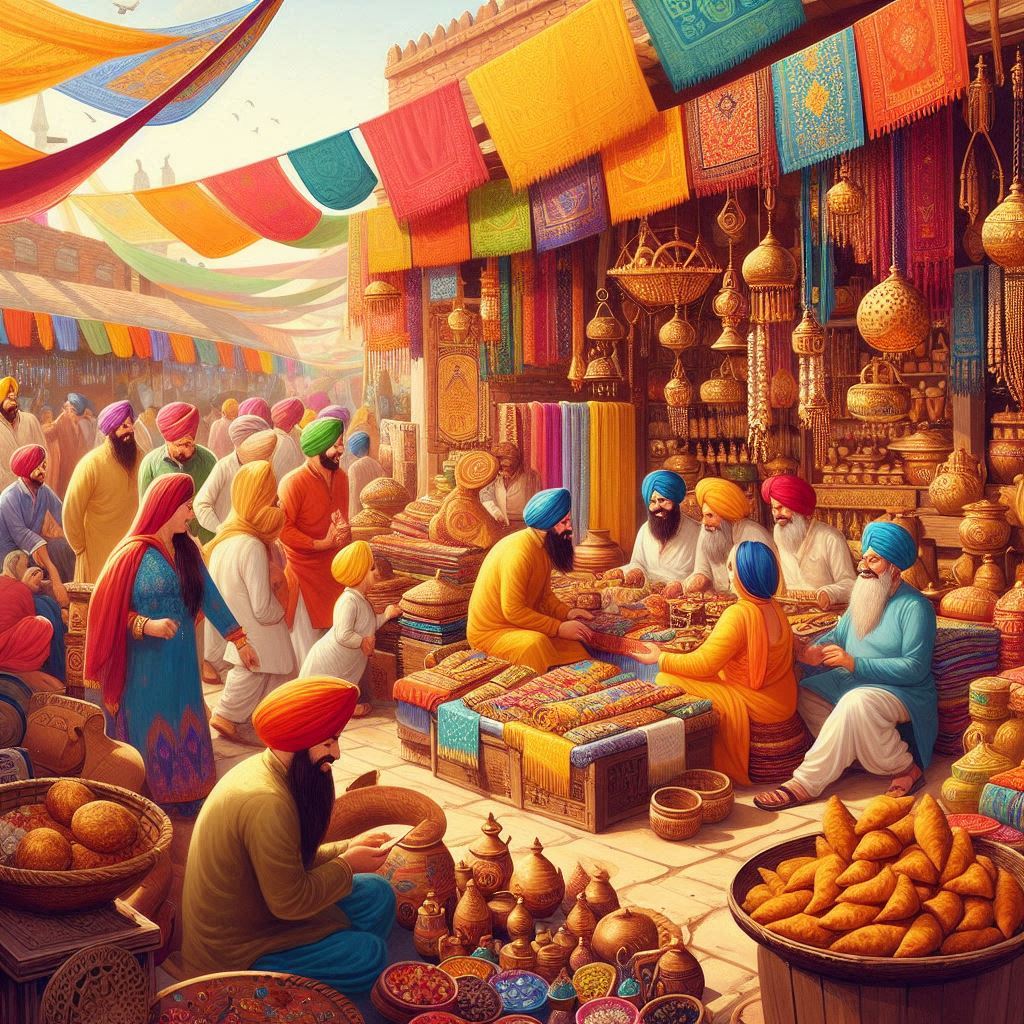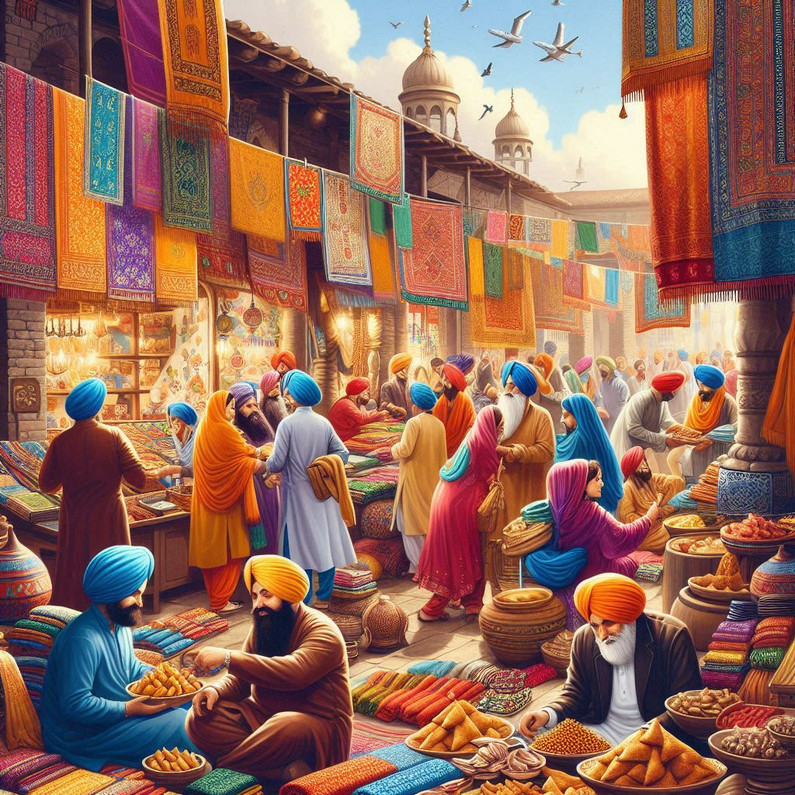Punjabi Art Nestled in the vibrant culture of Punjab
Preserving Tradition: Punjabi Art and Handicrafts
Nestled in the vibrant culture of Punjab lies a rich tapestry of art and handicrafts that speak volumes about its history, creativity, and the craftsmanship of its people. From intricate embroidery to robust wooden works, Punjabi art and handicrafts encompass a diverse range of traditions that have been passed down through generations, each piece telling a story of its own.
**Embroidery and Textiles:**
One of the most prominent aspects of Punjabi handicrafts is its exquisite embroidery work. Phulkari, which translates to "flower work," is a traditional embroidery style where vibrant threads are skillfully stitched onto fabric, often in floral motifs. This art form not only embellishes clothing but also serves as a means of self-expression and identity for Punjabi women. Another notable textile tradition is the Bagh embroidery, known for its geometric patterns and use of mirrors, primarily found in garments like shawls and dupattas.
**Woodwork and Furniture:**
Punjabi artisans are also renowned for their woodcraft, creating robust and beautifully carved furniture pieces that reflect both utility and aesthetics. The craftsmanship in wooden utensils, decorative items, and furniture such as chairs, tables, and beds showcases intricate designs that blend functionality with artistic expression. Sheesham and teak wood are often preferred for their durability and natural beauty, making Punjabi wooden handicrafts sought after both locally and internationally.

**Pottery and Ceramics:**
Pottery has a deep-rooted tradition in Punjab, with artisans skillfully crafting clay into various forms such as pots, utensils, and decorative items. The use of vibrant colors and traditional motifs distinguishes Punjabi pottery, which not only serves practical purposes but also holds cultural significance in rituals and ceremonies. Ceramic tiles and decorative tiles adorned with intricate designs are also a hallmark of Punjabi ceramic artistry, adding a touch of elegance to homes and public spaces.
**Metalwork:**
Punjab boasts a rich heritage in metalwork, with artisans creating intricate designs in brass, copper, and silver. The art of metal engraving and embossing is evident in items such as utensils, lamps, and traditional musical instruments like the dhol and the sarangi. The skillful craftsmanship and attention to detail in Punjabi metalwork reflect the community's reverence for tradition and artistry.
**Phulkari: A Cultural Emblem**
Among all Punjabi handicrafts, Phulkari stands out not only for its artistic finesse but also for its cultural significance. Traditionally embroidered by women, Phulkari textiles are not just decorative but are often imbued with personal and communal narrate .

**Challenges and Innovations:**
While Punjabi art and handicrafts have thrived for centuries, modern challenges such as changing consumer preferences and economic pressures pose a threat to traditional artisans. However, there is a growing movement to preserve and promote these crafts through initiatives that support artisans, encourage innovation, and explore new markets. Organizations and designers are collaborating with craftsmen to adapt traditional techniques to contemporary designs, ensuring that Punjabi handicrafts continue to evolve while maintaining their cultural essence.
**Conclusion:**
Punjabi art and handicrafts are more than just products of skillful hands; they are repositories of history, culture, and identity. From the vibrant threads of Phulkari to the intricate carvings of wooden furniture, each piece reflects the creativity and ingenuity of its makers. As efforts to preserve and promote these traditions continue, Punjabi art and handicrafts will undoubtedly endure as cherished cultural treasures, enriching both the local community and the global arts scene with their timeless beauty and profound stories.
Recent Posts
-
Sustainable Splendor: The Eco-Friendly Soul of Handcrafted Art
In an era of fast fashion and mass-produced home decor, the environmental cost of our "stuff" has ne …31st Dec 2025 -
The Art of Diplomacy: Why Handcrafted Heritage is the Language of Dubai’s Protocol
In the world of international relations and government protocol, a gift is never "just a gift." It i …31st Dec 2025 -
The Psychology of Appreciation: Using Bespoke Art to Retain Top Talent in Dubai
In the high-speed corporate environment of Dubai, where the global hunt for talent is relentless, a …31st Dec 2025



